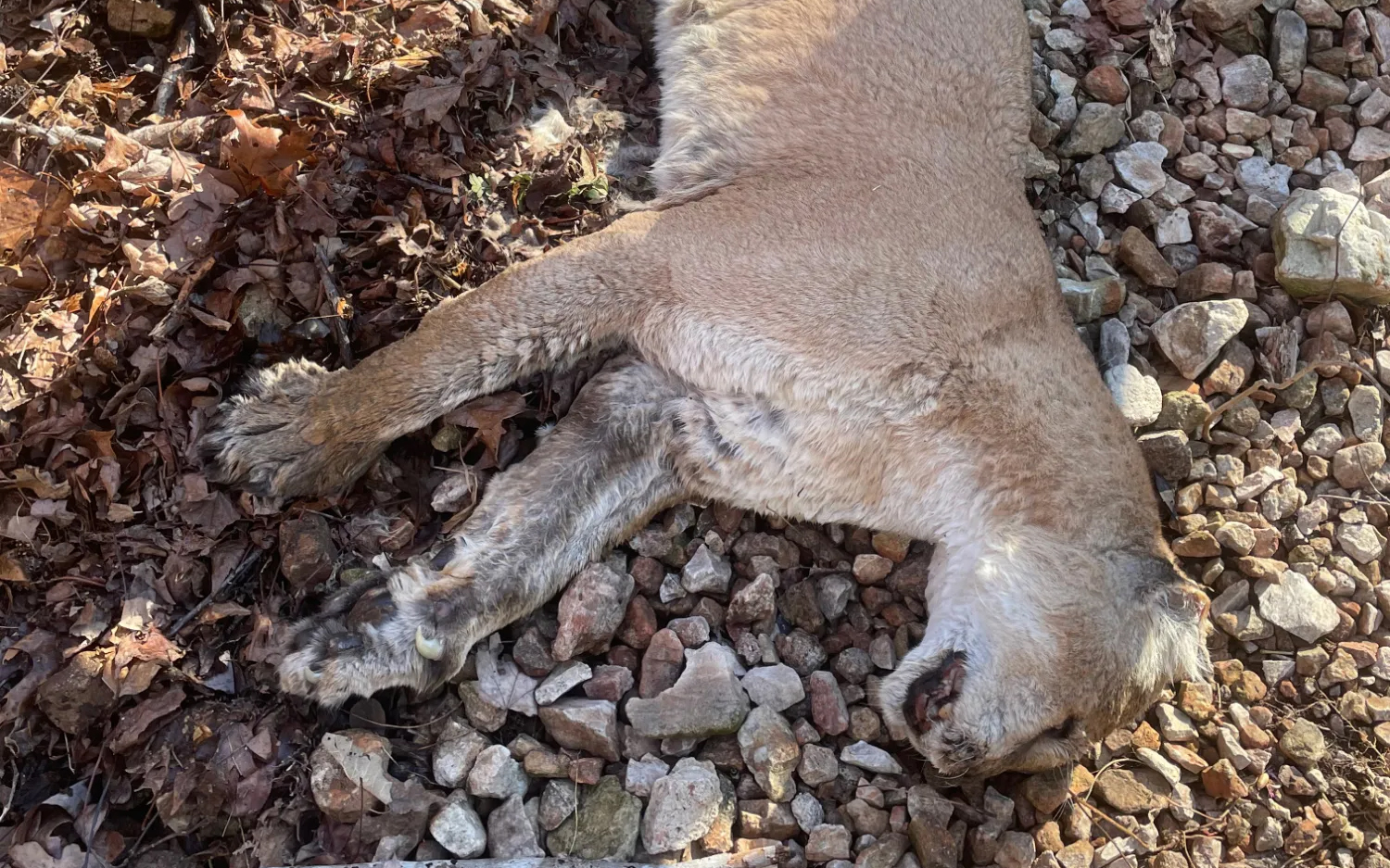A U.S. Forest Service employee recently discovered an adult male mountain lion carcass in Sylamore Wildlife Management Area in Stone County, Arkansas, prompting Arkansas Game and Fish Commission veterinarian Jenn Ballard to conduct a necropsy on Thursday. Not only were the results confusing, but so was the discovery itself. No one has seen a mountain lion carcass in the state of Arkansas in almost a decade.
The carcass, which had started to break down, showed no signs of bullet wounds or vehicle collisions, Ballard said in a AGFC press release. But other clues indicated that the cat was in poor condition when it died in the north-central part of the state.
“An adult, male mountain lion weighing 118 pounds and measuring approximately 85 inches in length was examined Thursday at the AGFC Calico Rock regional office,” Ballard said. “The carcass was moderately decomposed and was extremely thin. It had severely worn, broken and missing teeth, and the stomach was empty.”
The cougar will undergo more testing in the coming weeks to determine whether toxins or disease were the culprits, and a cause of death is not available at this time, AGFC spokesman Keith Stephens tells Outdoor Life. AGFC officials believe the cougar died where it was discovered; they do not suspect it was dumped after being transported from a different location. And because the mountain lion had all of its claws, it was likely wild and not kept as an exotic pet.

In November 2014, a hunter from Bastrop, Louisiana, named Douglas Ramer shot and killed a 148-pound mountain lion in Bradley County, Arkansas while he was sitting in his tree stand. He reported the killing to AGFC and claimed self-defense, explaining that the mountain lion had approached his stand and he felt threatened. As a result, he was not charged for any wildlife violations, and AGFC took the carcass for research purposes. Prior to that incident, no one had killed a mountain lion in Arkansas since 1975.
There have been 23 confirmed mountain lion sightings in Arkansas since 2010, Stephens says. In order for a sighting to be confirmed, it must be accompanied by some form of tangible evidence — hair, scat, tracks, photos, or videos that allow AGFC to determine the cougar’s location.
In spite of these two dozen sightings, AGFC biologists still don’t believe there is a breeding population of mountain lions in the state. Although it’s too early to guess where the recently-discovered dead mountain lion might have come from, officials determined through DNA testing that the lion killed in 2014 had originated in the Black Hills region of Wyoming and South Dakota.
Read Next: Watch: A Biologist Darts a Mountain Lion. It Nearly Attacks Him
Mountain lions have been expanding eastward from the Rocky Mountain Front for years. A pocket of prime habitat and confirmed sightings exists on the eastern-central Arkansas-Missouri border, where thick deciduous forest cover spans both states along the western edge of the the Lower Mississippi River Basin. Stone County and Sylamore WMA fall within this region. Mountain lions prefer dense, rugged cover far from human disturbance for optimal hunting and raising their young.

